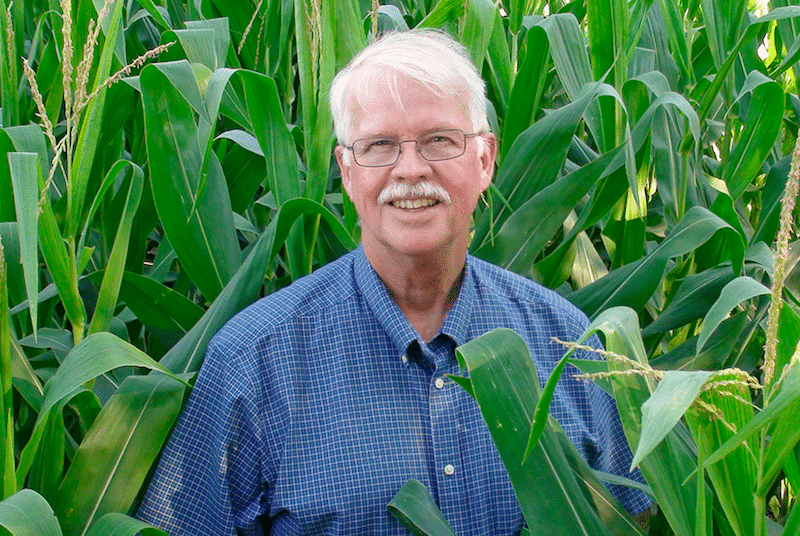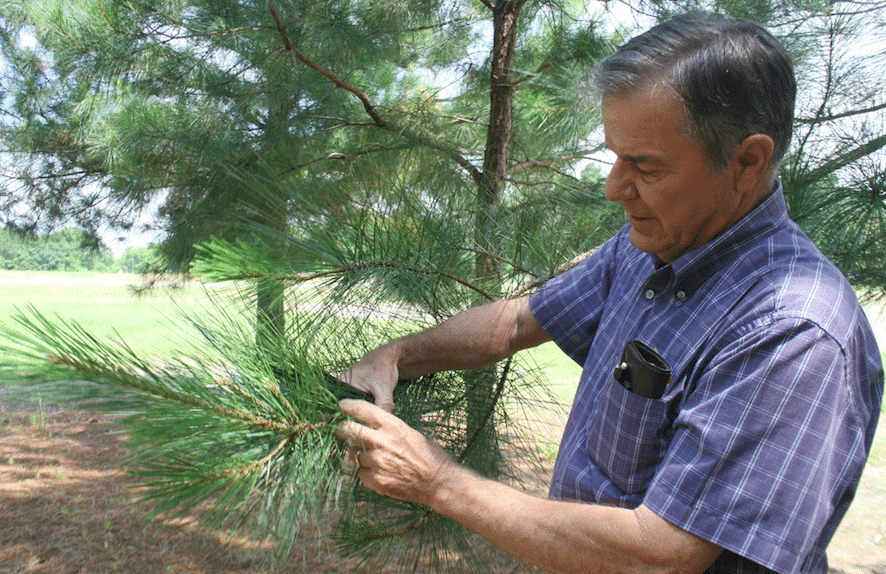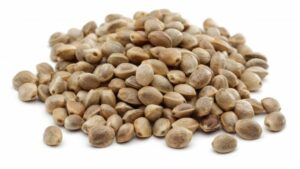This year’s National Association of Plant Breeders meeting focused heavily on how to ensure breeding goals translate into commercial success.
The road to commercializing a crop can be a long and winding one, but all successfully marketed crop varieties have one thing in common: innovative breeders who figured out a way to take a plant to the next level, and a captive audience in the form of growers and consumers who all want that crop and the products derived from it.
That was the unofficial theme of this year’s NAPB virtual meeting, put together by an organizing committee at the University of Nebraska-Lincoln led by wheat breeder Stephen Baenziger.
During a range of talks held via Zoom, it became clear that what has driven the success of crops like hybrid corn has been a thirst from both growers and consumers for something profitable, practical and affordable.
During World War II, massive quantities of corn starch were required to make bombs for the American war effort. Hemp also got a boost during the same time — in 1942 the U.S. government released a 14-minute film called Hemp for Victory explaining the many practical uses of the crop (including as fiber for rope, which was desperately needed by the American Navy), encouraging farmers to grow as much hemp as possible.
“The war drove near-universal adoption of hybrid corn in the United States. Even in Russia they recognized the utility of corn starch for munitions,” said University of Nebraska-Lincoln corn breeder Tom Hoegemeyer during his presentation on corn breeding history.
Today, more corn is produced than any other grain crop globally.
Hemp, of course, would follow a much different trajectory. After the war ended in 1945, the crop reverted to its de facto illegal status. It wouldn’t be until 2018 that federal legislation allowed American farmers to grow it once again.
But why would two plants take such drastically different journeys toward commercialization?
“What’s acceptable to consumers and what will add value for growers and processors are sometimes two different things,” said Brandon Wardyn, corn breeder and zone lead for Corteva Agriscience’s North America Far West Evaluation Zone.
According to Wardyn, for a variety to truly succeed commercially, it must provide value for the plant breeder’s customer — be they a grower or processor — and find acceptance among consumers. If either of those is lacking, or if there is a lag or disconnect between the two, commercial acceptance simply will not occur.
In the case of hybrid corn, the recipe for success was there— the product was of immense value to growers and processors and was every consumer’s dream come true, producing a useful, affordable product they could buy at every grocery store.
Hemp did not benefit from the same scenario. Due to the stigma caused largely by its association with marijuana, once the war ended and the need for rope diminished, it simply didn’t make sense to keep growing it.
Now, breeding programs are finally able to work with hemp as a crop and develop next-gen varieties suited to American growing regions, noted Ismail Dweikat, professor at the University of Nebraska-Lincoln, who presented on hemp breeding for the Midwest and northeast region of the United States.
Hemp’s potential for use in building materials, food, biodiesel and clothing is something he is researching extensively. A draft genome and accompanying transcriptome of Cannabis sativa were published in 2011 and a large-scale study of the genetic structure of marijuana and hemp types was published in 2015.
Now, with the advent of the CBD market, investors are rushing to patent genetically modified cannabis molecules. With hemp production and consumption on the rise, how much will genetic engineering play into hemp’s development as a commodity crop?
Great potential exists, he said, but hurdles still abound for anyone wanting to work with the crop.
“Because of its legal limbo, hemp growers need special licenses from their state, which means fees and paperwork. Growers may also be subject to a criminal background check. In states where it is legal, farmers must have their hemp plants tested to ensure they are below a certain threshold of THC content,” he said. “If your plants are found to have too much THC, they may be destroyed.”
Despite those ongoing challenges, now that consumer acceptance is rising and growers begin rediscovering the crop, a hemp renaissance is taking place that mirrors the takeoff of hybrid corn in the 1940s.

Paradigm Shift
“To me, the turning point toward commercial success is always the attractiveness of the product,” said Fan-Li Chou, vice president of scientific affairs for the American Seed Trade Association. She presented on gene editing regulatory issues in the United States and beyond.
Like many places on earth, U.S. regulatory policy on gene editing is still a work in progress. In June 2019, the White House put out an executive order calling on U.S. federal agencies to streamline regulatory processes — including the approach to gene editing — in order to make U.S. policy more evidence-based and transparent.
Furthermore, a global consistency on regulatory policy is needed to support cross border scientific collaboration and trade, Chou said.
Regulatory policy aside, she says the deciding factor on whether gene edited products are successful may lie with consumers themselves.
“I would be excited by a non-browning avocado, which is under development by several entities. The manufacturer of the Impossible Burger makes it clear they use GMO soybeans in their product, and it’s still hugely popular,” she said. “If consumers are excited by the product, then there will be acceptance.”
Sean Finnie, manager of cultivar development and research for the Massachusetts-based Bay State Milling Company, spoke about building a high amylose wheat supply chain and the need for what he calls a “paradigm shift” in the way breeders sell a new cultivar to growers and, ultimately, consumers.
Although starches high in amylose are associated with numerous health benefits, they have not traditionally been used in most food products due to the lack of a high-amylose supply chain. Finnie wants to change that. Bay State Milling Company is using high-amylose wheat varieties to create new products including healthier ramen noodles, pasta and pizza crust.
“As my ‘breeder’s pitch’ I often say that high amylose wheat is a cross between nutrition and affordability with a strong disease package for Type 2 diabetes, some cancers, coronary heart disease, obesity, and overall holistic benefits for digestive health and immune system health,” he said.

Finding what Works
Successfully commercializing a variety isn’t always about figuring out what consumers want, though. Charlie Rohwer, horticultural scientist at the University of Minnesota Southern Research and Outreach Center, knows what fans of craft beer already desire. He presented on small-scale hop breeding for regional growers and brewers.
“Craft beer was a small portion of the beer market until mid-2000s when it took right off. Craft beer uses a lot more hops than mass produced brands. Craft beer enthusiasts want that full hop flavour you don’t find in a beer like Bud Light,” he said.
Problem is, farmers in Minnesota who want to grow hops have a hard time doing so due to competition from producers in states like Washington, Oregon and Idaho. Also, many popular hop varieties do not grow well in Minnesota, and several varieties that might grow well in the North Star State are proprietary.
Hop growers in Minnesota need new cultivars for marketing purposes, Rohwer said. As a result, he’s using public varieties to create made-in-Minnesota hops that can be marketed under new names to craft beer makers in the state and potentially beyond.
“We’re not doing anything extraordinary; we’re simply working to create something that works for growers in Minnesota that will be appealing to craft brewers and their customers.”
Creating a functional product with the consumer in mind is a philosophy Wayne Hanna drove home to meeting attendees during his talk on what makes a good cultivar. Hanna, who spent his career at the University of Georgia, is an internationally recognized plant breeder of grasses and grain crops, particularly turf grass and pearl millet. He’s also last year’s NAPB Lifetime Achievement Award winner.
In recent years he has taken to breeding pine trees for the ornamental market. He said he got chuckles from suppliers when he floated the idea of breeding a coneless pine tree, something he is currently working at doing during his retirement.
“People said I was crazy to want to make a pine tree with no cones. I said, ‘If you ask homeowners in the South, about 1% will tell you they don’t mind having pinecones all over their lawn. Everyone else says they’re aggravating. If you can breed a pine tree that redirects its energy to tree growth instead of making cones, it could be a billion-dollar business,” he said.













